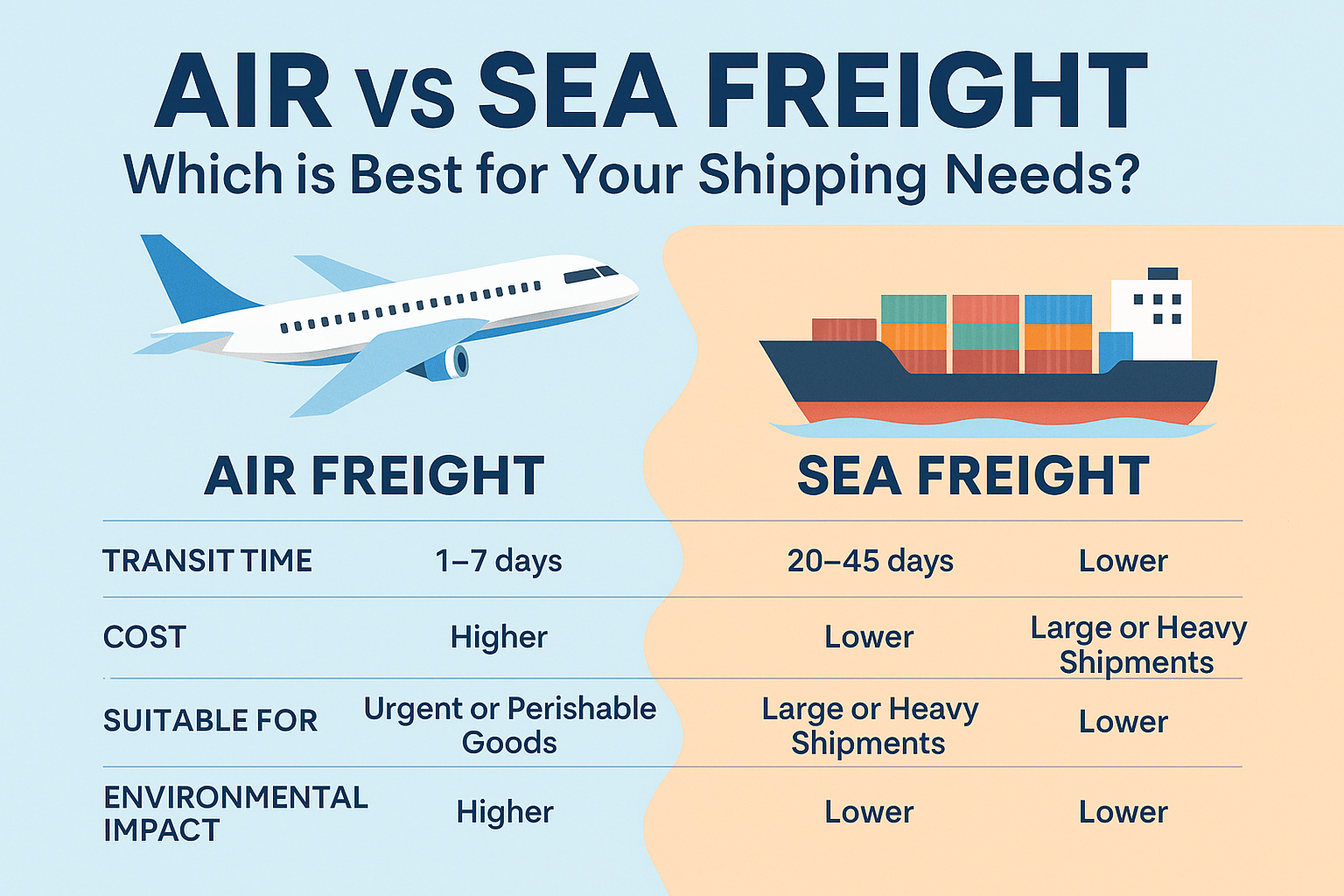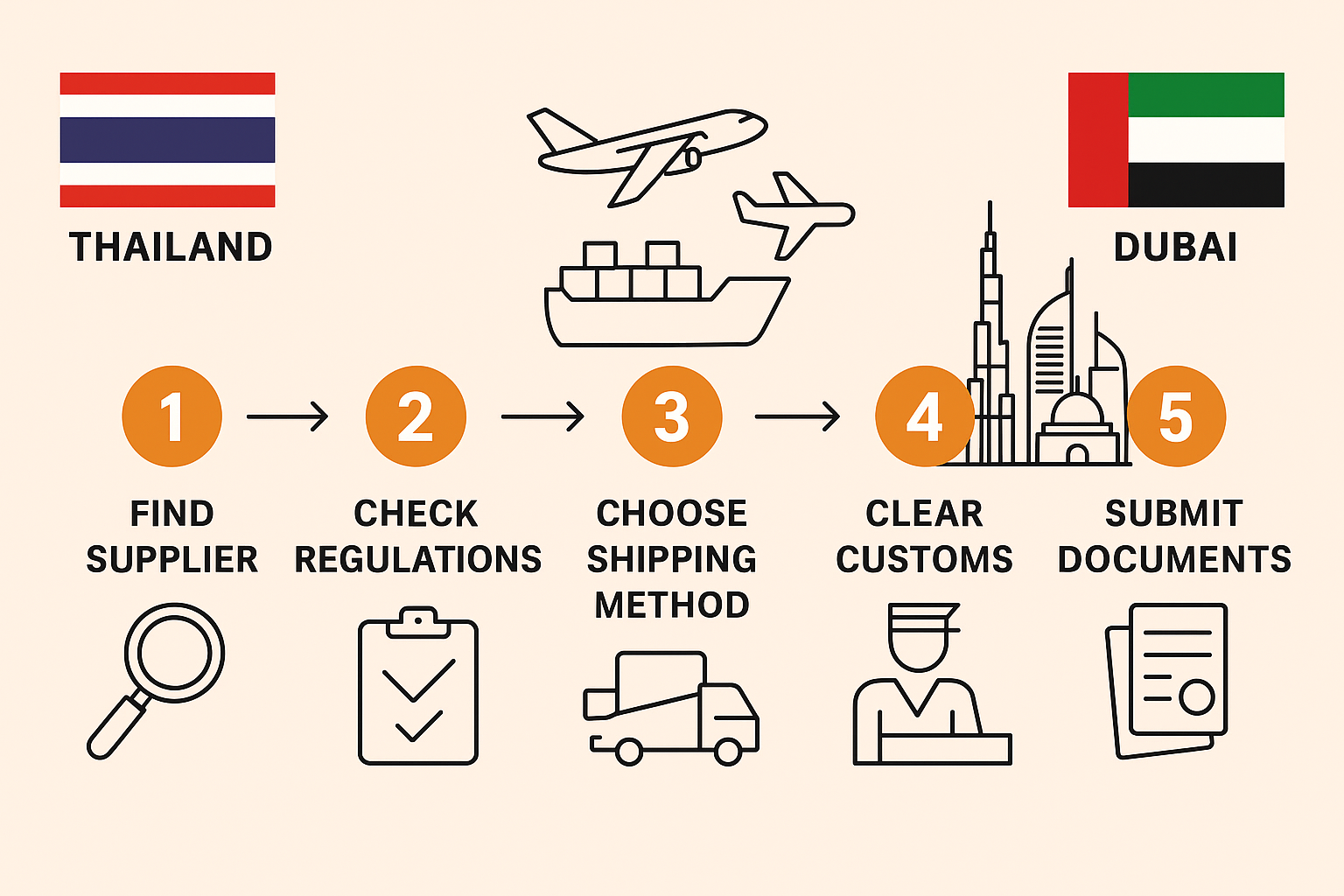From Factory to Port: The International Shipping Process from Thailand
August 6, 2025

From Factory to Port: The International Shipping Process from Thailand
When it comes to international trade, moving products from the factory to the port is a vital process that directly affects timelines, costs, and customer satisfaction. Thailand, as a global export hub, plays a major role in manufacturing and shipping products such as OEM goods, frozen foods, herbal products, and packaging materials.
This article outlines the international shipping process from Thailand step by step, with expert insights from V PLUS EXPERT.
✅ Step 1: Product Inspection and Document Preparation
Before shipping, products go through a quality control (QC) process to ensure:
- Accuracy in quantity and specification
- Proper packaging for international shipping
- Correct labeling per the destination country’s standards
Required documents may include:
- Commercial Invoice
- Packing List
- Certificate of Origin
- Special documents (e.g. Health Certificates, MSDS)
✅ Step 2: Product Packing
Proper packing is crucial to prevent damage during transit, especially for sea freight.
- Use sturdy boxes, crates, or pallets
- Add protective materials (foam, bubble wrap)
- For temperature-sensitive goods like frozen food, use cold-chain packaging
✅ Step 3: Shipping Space Booking
Your export agent or freight forwarder will:
- Reserve container space for large shipments (FCL)
- Consolidate small shipments into shared containers (LCL)
Advance booking is recommended, especially during peak seasons.
✅ Step 4: Thai Customs Clearance
To export goods legally from Thailand, customs clearance is required:
- Submit export declarations via e-Customs
- Undergo customs inspection
- Pay export duties (if applicable)
Many exporters rely on customs brokers to ensure accurate and efficient paperwork.
✅ Step 5: Inland Transportation to Port
Once cleared, goods are transported from the factory to major Thai ports:
- Laem Chabang Port
- Klong Toey Port
- Suvarnabhumi Airport (for air freight)
Appropriate vehicles, such as refrigerated trucks, are used based on product type.
✅ Step 6: Loading & Departure
At the port or airport, goods are loaded according to the shipping schedule. Exporters receive:
- Bill of Lading (for sea freight) or Airway Bill
- Container tracking numbers
- Departure and ETA details
บทความอื่นๆที่ใกล้เคียง
แสดงทั้งหมด
From Factory to Port: The International Shipping Process from Thailand
August 6, 2025
From Factory to Port: The International Shipping Process from Thailand
When it comes to international trade, moving products from the factory to the port is a vital process that directly affects timelines, costs, and customer satisfaction. Thailand, as a global export hub, plays a major role in manufacturing and shipping products such as OEM goods, frozen foods, herbal products, and packaging materials.
This article outlines the international shipping process from Thailand step by step, with expert insights from V PLUS EXPERT.
✅ Step 1: Product Inspection and Document Preparation
Before shipping, products go through a quality control (QC) process to ensure:
- Accuracy in quantity and specification
- Proper packaging for international shipping
- Correct labeling per the destination country’s standards
Required documents may include:
- Commercial Invoice
- Packing List
- Certificate of Origin
- Special documents (e.g. Health Certificates, MSDS)
✅ Step 2: Product Packing
Proper packing is crucial to prevent damage during transit, especially for sea freight.
- Use sturdy boxes, crates, or pallets
- Add protective materials (foam, bubble wrap)
- For temperature-sensitive goods like frozen food, use cold-chain packaging
✅ Step 3: Shipping Space Booking
Your export agent or freight forwarder will:
- Reserve container space for large shipments (FCL)
- Consolidate small shipments into shared containers (LCL)
Advance booking is recommended, especially during peak seasons.
✅ Step 4: Thai Customs Clearance
To export goods legally from Thailand, customs clearance is required:
- Submit export declarations via e-Customs
- Undergo customs inspection
- Pay export duties (if applicable)
Many exporters rely on customs brokers to ensure accurate and efficient paperwork.
✅ Step 5: Inland Transportation to Port
Once cleared, goods are transported from the factory to major Thai ports:
- Laem Chabang Port
- Klong Toey Port
- Suvarnabhumi Airport (for air freight)
Appropriate vehicles, such as refrigerated trucks, are used based on product type.
✅ Step 6: Loading & Departure
At the port or airport, goods are loaded according to the shipping schedule. Exporters receive:
- Bill of Lading (for sea freight) or Airway Bill
- Container tracking numbers
- Departure and ETA details

